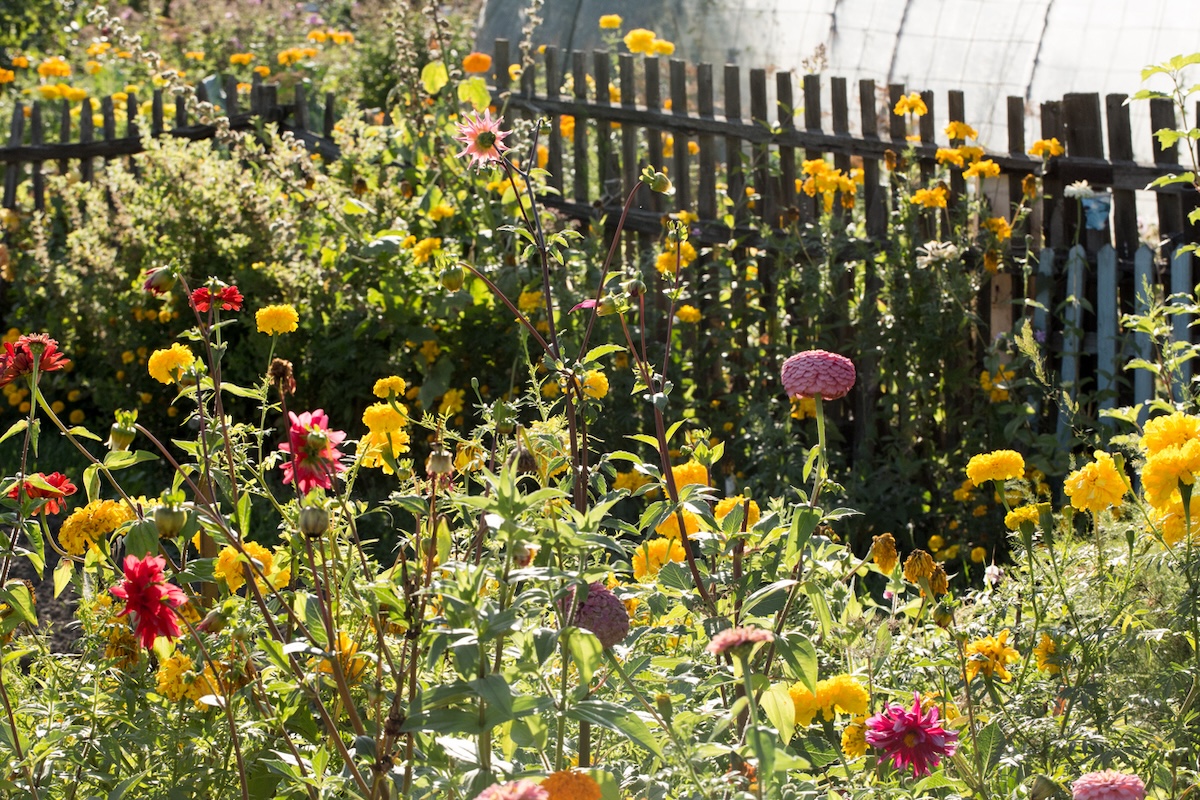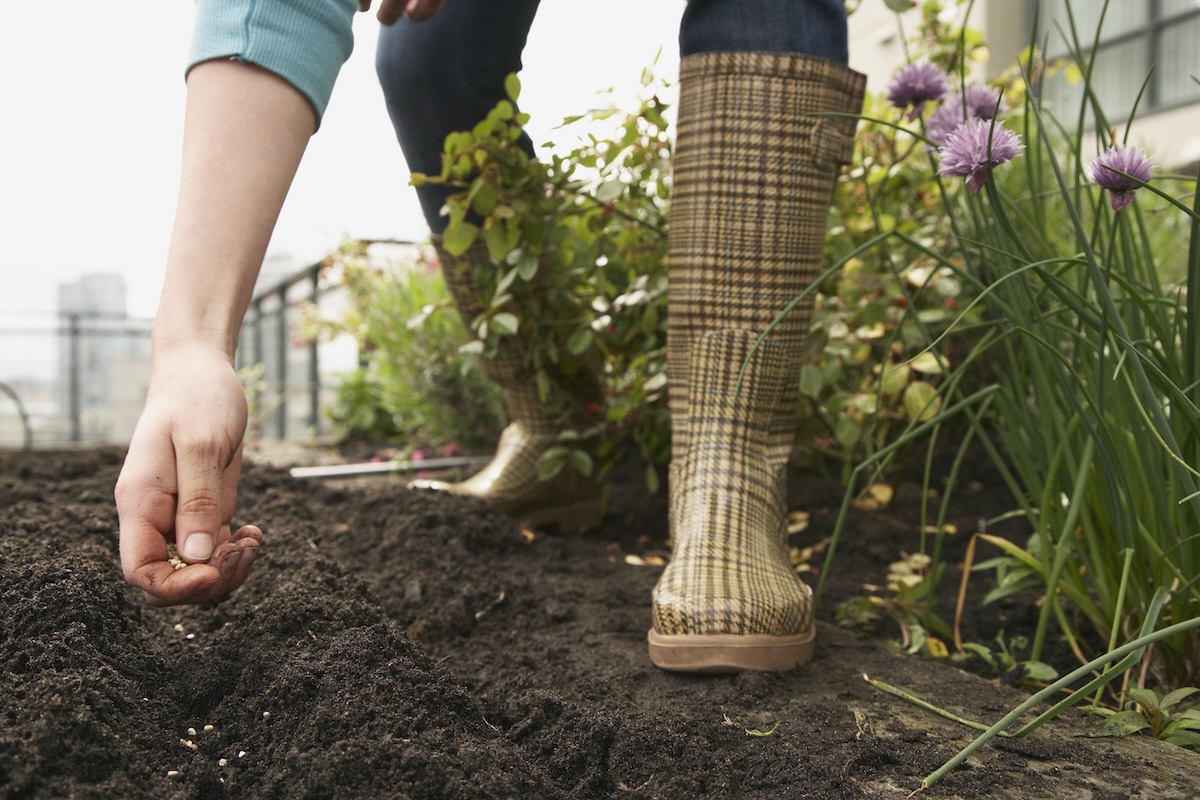Chaos gardening isn't a new concept; it's been around for a while and is characterized by a free-spirited approach to gardening that incorporates elements of spontaneity and natural growth patterns. The style fosters a deeper connection with nature by using old seeds, encouraging native plants, and adopting more relaxed, organic gardening methods. “It's a fun way to express yourself by embracing the beauty of randomness and the joy of watching the unexpected unfold,” says Russell Taylor, vice president of Live Earth Products, Emery, Utah.
Chaos gardening involves scattering a variety of seeds around your outdoor space and watching the process of natural selection take place as plants compete for sunlight, space, and nutrients. “This is the core idea of chaos gardening,” Taylor explains. “Instead of planting flowers in neat rows, random colors and shapes form organically, giving them the appearance of natural, wildflowers.”
The gardening movement has become a popular viral trend over the past year, especially on platforms like TikTok, garnering millions of views as a carefree, creative way to grow plants and embrace a wild, natural aesthetic.
What are the benefits of chaos gardening?
Chaos gardening is more than just a gardening technique; it's a philosophy. It encourages embracing unpredictability and enjoying the natural evolution of your garden. This approach leads to resilient ecosystems, as diverse plant species are better able to tolerate pests, diseases, and changing climatic conditions. What's more, chaos planting attracts a variety of pollinators, increasing local biodiversity.
Adding native plants will benefit biodiversity in the future. “Native plants are adapted to local soil types and require less maintenance and fertilizer,” Taylor explains. “By choosing native species, gardeners can support local wildlife, such as insects and birds, which contribute greatly to the health of local ecosystems.”
Photo: istockphoto.com
What is the best environment for chaos gardening?
“The exciting thing about chaos gardening is that it adapts seeds to thrive in almost any growing environment,” says Taylor. Chaos gardening values diverse conditions, especially natural diversity, and thrives in conditions that require minimal intervention.
Ideal environments include low-maintenance sites such as biodiverse natural landscapes, wildflower meadows, pollinator gardens, and even suburban lots where order and wildness create a harmonious balance. These environments allow for the spontaneous growth of a wide variety of plant species, promote ecological resilience, and create vibrant, thriving ecosystems without the need for strict management or excessive maintenance. “Be sure to check your recently updated USDA Plant Hardiness Zones. [Map] “And choose plants that are appropriate for your area,” Taylor suggests. “And if you want chaos planting to thrive, choose plants that do well in sunny or shady areas,” he adds.
What are the biggest challenges you might face when starting a chaos garden?
“One of the first challenges is letting go of control and surrendering to the unpredictability of a garden's development,” says Taylor. Starting a chaotic garden can be daunting, with challenges like balancing different plants with their different needs. “Selecting seeds and plants is fun, but it also requires a bit of study, as you have to learn about the plant's growth habits,” says Taylor, who also warns that it's important to understand that some plants are very prolific and will take over an area, so planting randomly is not a good idea.
Allowing plants to grow freely is an important aspect of chaos gardening, but it also increases the risk of weeds growing, so active management measures are necessary. Utilizing space effectively, without overcrowding or neglecting plants, is key to success. Additionally, transitioning from traditional gardening methods to chaos gardening can involve a learning curve for gardeners.
 Photo: istockphoto.com
Photo: istockphoto.com
What are some common misconceptions about chaos gardening?
There's a misconception that chaos gardening is maintenance-free: Taylor says that while it's a low-maintenance approach, it still requires some care, like managing soil health, pruning after planting, and occasional weeding.
The next misconception is that chaos gardening doesn't require planning. Unlike guerrilla gardening, which involves growing plants spontaneously in public spaces, often without permission, chaos gardening requires a thoughtful approach. Though it employs a more organic and spontaneous method of planting, chaos gardening still requires strategic decisions about plant selection, spacing, and environmental considerations.
Another misconception is that chaos gardens are messy. This isn't necessarily the case. Taylor explains that these gardens can be incredibly beautiful and vibrant if properly maintained. With thoughtful design and care, chaos gardens can be transformed into mesmerizing landscapes that capture the essence of wild beauty while retaining order and charm.
What do you need to start a chaos flower garden?
The best thing about starting a chaos garden is that you don't need a lot of gardening tools. In fact, it doesn't cost much to get started. As with any garden, starting from scratch will give you the best results.
“The key to success in any garden is increasing the organic matter in the soil,” says Taylor. “Adding compost and humic acid enriches the soil, forming active, stable organic matter that improves soil structure. This step is essential for growing a diverse range of plants in your Chaos Garden,” says Taylor. Once your soil is prepared, you can choose a diverse Chaos Garden seed mix that includes flower, vegetable and herb seeds, new seeds and old seeds from the previous season. Plant according to the instructions on your seed pack. To promote germination and continued growth, water regularly and tend to your garden, paying attention to watering and weeding as needed.
 Photo: istockphoto.com
Photo: istockphoto.com
Final thoughts
A chaos garden is a living work of art that is constantly in motion. While the concept may sound like a dream garden, it does require some planning. But the results can be stunning. Taylor recommends imagining your garden as a canvas, and rather than painting every last detail, let your creativity run wild and splash color throughout the space in a way that's reminiscent of the art of Jackson Pollock.
Haphazard sowing of seeds produces unexpected colour combinations and textural contrasts, creating a garden that changes from week to week and year to year – an ever-changing landscape that provides a constant sense of surprise and delight for the gardener and the local wildlife.


